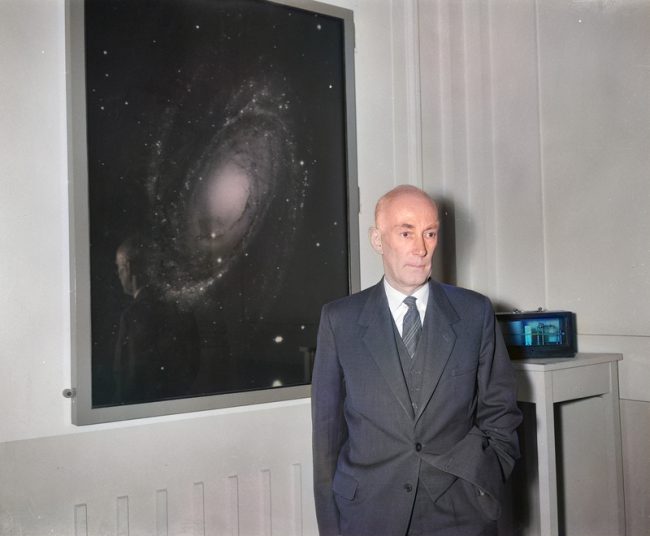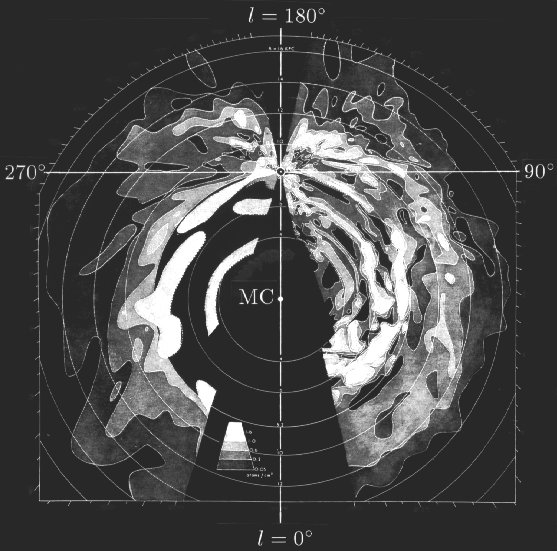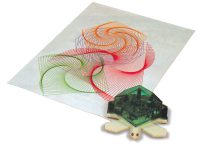
Jan Hendrik Oort (1900-1992)
Image by Joop van Bilsen
On April 28, 1900, Dutch physicist and astronomer Jan Hendrik Oort was born. One of the greatest astronomers of the 20th century, Oort made significant contributions to the understanding of the Milky Way and who was a pioneer in the field of radio astronomy. Oort determined that the Milky Way rotates and overturned the idea that the sun is at its center; he discovered mysterious invisible ‘dark matter‘ in 1932, as well as a number of important insights about comets. The Oort cloud was named after him.
“From a score of well-observed original orbits it is shown that the “new” long-period comets generally come from regions between about 50000 and 150000 A.U. distance. The sun must be surrounded by a general cloud of comets with a radius of this order, containing about 1011 comets of observable size; the total mass of the cloud is estimated to be of the order of 1/10 to 1/100 of that of the earth. Through the action of the stars fresh comets are continually being carried from this cloud into the vicinity of the sun.
– Jan Hendrik Oort (3 January 1950)
Jan Hendrik Oort – Early Years
Jan Hendrik Oort was born in Franeker, a small town in the Dutch province of Friesland, the second son of Abraham Hermanus Oort and Ruth Hannah Faber. Oort visited the secondary school in Leiden where he became enthusiastic about physics and mathematics. At Groningen University, he started to study physics in 1917 and it is believed that he took courses in Hydrodynamics, Light and Sound, Analysis, Electricity, and the Method of Least Squares. Oort also took an astronomy course and quickly decided that he wanted to graduate in astronomy rather than physics. After graduating, Oort was appointed Assistant in Groningen but soon after, arrangements were made for him to go to Yale Observatory in the United States in order to work as an assistant to Frank Schlesinger. At the Yale Observatory, he was responsible for the observations with the zenith telescope. While Schlesinger was trying to develop a new method to obtain increased accuracy in positional astrometry, Oort was told to take the necessary plates and to measure them, which did not appeal to him the most. Fortunately, William de Sitter had just finished a reorganization of Leiden Observatory. As a result he had some vacancies and he would be most happy if Oort would join the staff at the end of his spell in New Haven.
At Leiden Observatory
Jen Hendrik Oort was happy to start at Leiden Observatory, where he was subsequently appointed as Conservator in 1926, as Lecturer in 1930. Five years later he was even appointed Professor Extraordinary. He continued his research on the properties of high-velocity stars and had collected a great amount of data, hoping to get a clue about the odd distribution over the sky of their velocity vectors. Stars with velocities relative to the Sun of less than 63 km/sec these are randomly oriented. However, for those with a velocity above this value, Orort observed a pronounced asymmetry. Oort intended to write about these phenomena in his doctoral thesis and obtained the degree even without having come much nearer to an explanation.
Dynamics of the Galaxy
Jan Handrik Oort’s publication on the Oort-Lindblad theory of galactic rotation was closely followed by his work on the dynamics of the galaxy. Also, Oort researched on interstellar absorption and began looking for the factor that caused it, giving rise to a very important branch of astronomy in the Netherlands. In 1935 Oort was appointed General Secretary of the International Astronomical Union. Unfortunately, Oort was not able to continue his research as he wished during World War II and decided so disappear for some time, moving 100km east of Leiden with his family. Oort did not get back to Leiden until some time during June 1945 and started out with getting the Observatory back to normal.

Radio map of the galaxy based on the 21cm emission line by Oort et al. (1958)
Novae and Nebulae
Oort was now director of the Observatory and Full Professor of Astronomy and to one of his many early tasks after the war was setting the direction astronomical research should take. He set out a number of lines of research that he thought should be pursued. One of the major fields was radio astronomy. Oort was still involved in Van de Hulst’s work on dust particles in interstellar space. He worked on a model for Nova Persei 1901, using the theory that the effect of an illuminating beam sweeping a region containing clouds may give the appearance of faster-than-light velocities and and trying to work out the effects of braking by the interstellar medium on the ejected clouds. Oort came up with the idea to test theories about energy supply on the Crab Nebula through its expansion.[4]
The Oort Cloud
Oort also came across comets and he concluded that most comets come originally from a reservoir of debris almost halfway to the nearest stars, that is today mostly referred to as the Oort Cloud. The Oort cloud is thought to comprise two regions: a spherical outer Oort cloud and a disc-shaped inner Oort cloud, or Hills cloud. Objects in the Oort cloud are largely composed of ices, such as water, ammonia, and methane. Astronomers believed that the matter composing the Oort cloud formed closer to the Sun and was scattered far into space by the gravitational effects of the giant planets early in the Solar System’s evolution. Although no confirmed direct observations of the Oort cloud have been made, it may be the source of all long-period and Halley-type comets entering the inner Solar System, and many of the centaurs and Jupiter-family comets as well. The outer Oort cloud is only loosely bound to the Solar System, and thus is easily affected by the gravitational pull both of passing stars and of the Milky Way itself. These forces occasionally dislodge comets from their orbits within the cloud and send them towards the inner Solar System. Based on their orbits, most of the short-period comets may come from the scattered disc, but some may still have originated from the Oort cloud.
Later Years
From 1958 to 1961, Jan Hendrik Oort was president of the International Astronomical Union. In 1946 Oort was elected to the American Academy of Arts and Sciences, in 1953 to the National Academy of Sciences. In 1973 Oort was elected a member of the Leopoldina. In 1955 he was elected corresponding member of the Göttingen Academy of Sciences. Jan Hendrik Oort died on November 5, 1992, at age 92. “Colleagues remembered him as a tall, lean and courtly man with a genial manner,” reported his New York Times obituary.
ASTR 100: Lecture 13 Comets, the Kuiper Belt and Oort Cloud, [10]
References and Further Reading:
- [1] Jan Hendrik Oort at Harvard
- [2] Jan Hendrik Oort at Leiden University
- [3] Jan Hendrik Oort at ESA
- [4] The Supernova of 1054, SciHi Blog
- [5] Wilford, John (12 November 1992). “Jan H. Oort, Dutch Astronomer In Forefront of Field, Dies at 92“. New York Times.
- [6] Jan Hendrik Oort at Wikidata
- [7] Oort, J. H. (1970). “Galaxies and the Universe: Properties of the universe are revealed by the rotation of galaxies and their distribution in space“. Science. 170 (3965): 1363–70.
- [8] Rougoor, G. W.; Oort, J. H. (1960). “Distribution and Motion of Interstellar Hydrogen in the Galactic System with Particular Reference to the Region within 3 Kiloparsecs of the Center”. Proceedings of the National Academy of Sciences. 46 (1): 1–13.
- [9] Jan Hendrik Oort, The structure of the cloud of comets surrounding the Solar System and a hypothesis concerning its origin. Bulletin of the Astronomical Institutes of the Netherlands 11 (408): 91–110.
- [10] ASTR 100: Lecture 13 Comets, the Kuiper Belt and Oort Cloud, Doug Faust @ youtube
- [11] Timeline of Dutch Astronomers, via DBpedia and Wikidata






Pingback: Whewell’s Gazette: Year 2, Vol: #38 | Whewell's Ghost